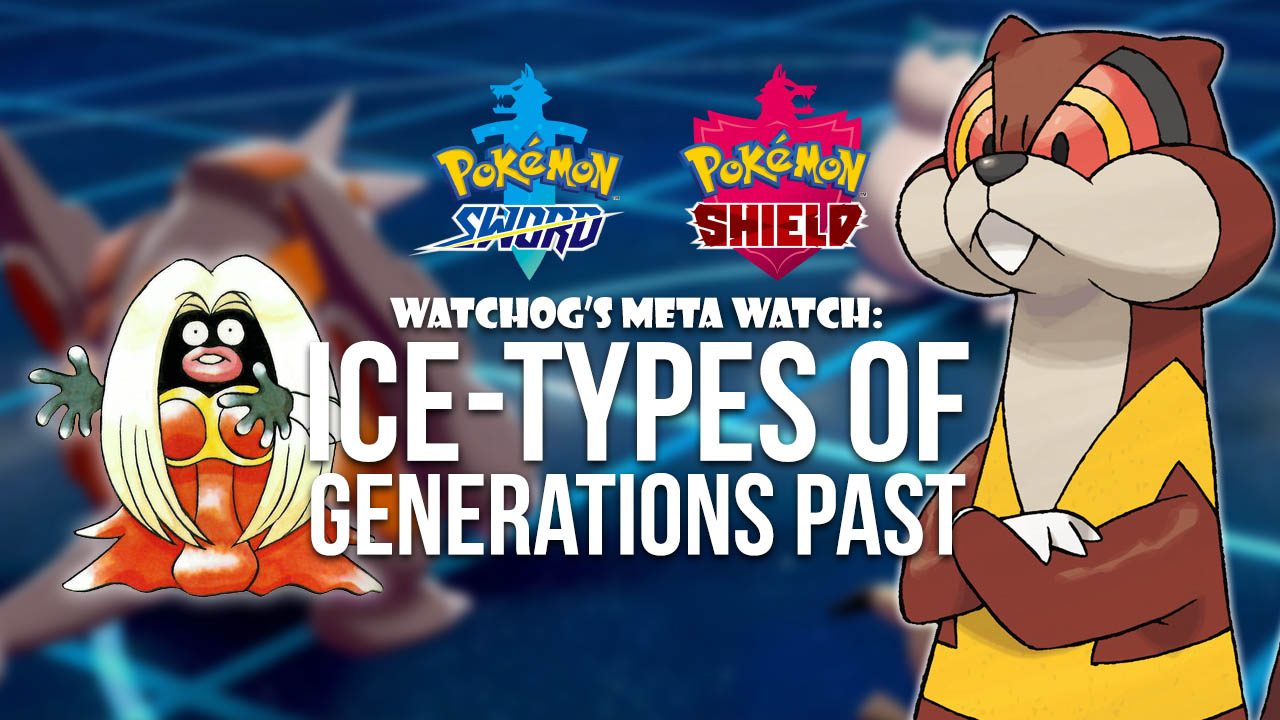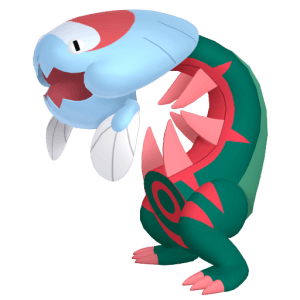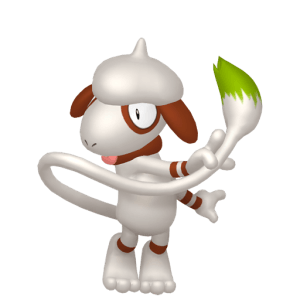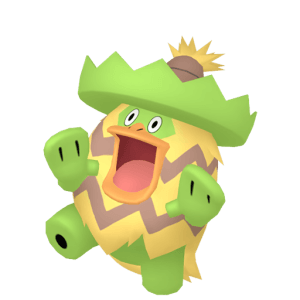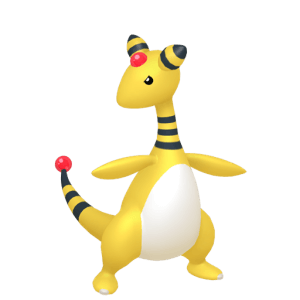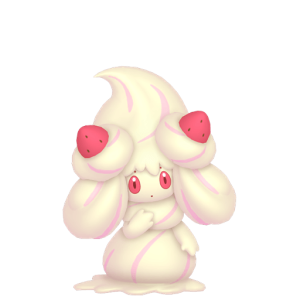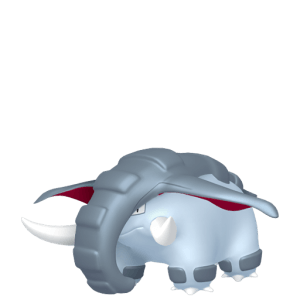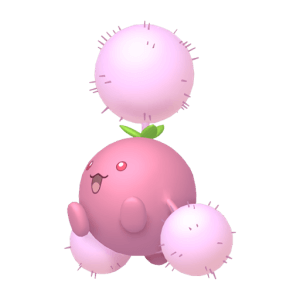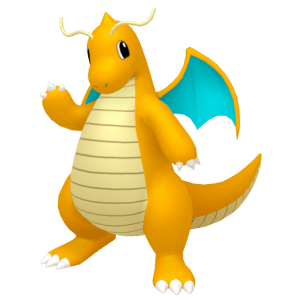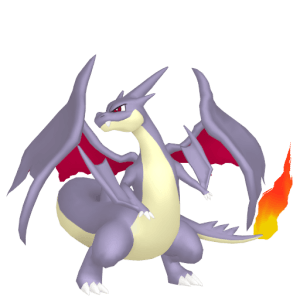You there, Trainer – what day is it? Why, today’s the day we embrace the Christmas spirit and revisit some of the most powerful Ice types of competitive Pokémon past!
The Ice type has a very checkered history. The Pokémon community has often considered it one of the worst types in the game on account of its myriad weaknesses and lack of resistances, but it’s also one of the best offensive types going with accurate and powerful moves that punish many highly-used competitive threats. Even within this single type there’s a great variety of strategies and playstyles to choose from, with the result that Pokémon Showdown OU has always featured at least one Ice species regardless of generation.
As the winter winds draw in, stoke the fire and prepare for a visitation from the frigid fighters that have played integral roles in past OU formats – scroll down, and know them better, man!
Gen 1: Jynx

Sleep is a very powerful mechanic in Gen 1 due to the fact that waking up takes up a full turn, making it possible to keep a Pokémon asleep indefinitely. Despite the existence of Sleep clause limiting the number of sleeping Pokémon to one per team, a sleep-inducer is near-mandatory on every Gen 1 team.
This is where Jynx shines. Gengar might be the fastest sleep-inducer with Hypnosis and Exeggutor might be the most reliable with good accuracy and bulk, but Jynx has a potent mix of both speed and accuracy with Lovely Kiss. 95 Special is also good by Gen 1 standards, and there are numerous Pokémon in OU that acutely dislike having to take a powerful, 90%-accurate Blizzard to the face including Zapdos, Rhydon and Golem. Even Chansey, an otherwise extremely reliable counter, can be rendered useless through a deceptively decent Freeze chance of 10%.
Though Psychic is certainly one of the best types in Gen 1, it doesn’t actually provide much for Jynx beyond a means of keeping Gengar at bay and the ability to switch in on fellow Psychics (though most of them will still beat Jynx if Sleep clause is active). In fact, there’s a case to be made that Ice has never been better than it was in Gen 1, where Fighting and Fire types are all but irrelevant to top-tier play and the best Rock types are extremely vulnerable to Blizzard.
The Gen 1 meta isn’t all kind to Jynx though. To this day the Human Shape Pokémon has appalling physical defences and Kanto’s most dangerous threats can take full advantage of this, threatening easy KOs. This especially applies to Tauros, the most powerful Pokémon in Gen 1 OU, which effortlessly outspeeds and 2HKOs Jynx – if Jynx has taken almost any prior damage, Tauros can even 1HKO with Hyper Beam!
Honourable mention: Articuno

The first of the legendary bird trio boasts the title of possessing the most powerful Blizzard in the game, along with gargantuan stats all round. Unfortunately, Articuno is lumbered with a barren movepool, limiting its effective utility to spamming Ice moves.
Gen 2 and 3: Cloyster

One of the most impactful moves released in Gen 2 is undoubtedly Spikes, the first of the so-called entry hazards. The move’s distribution is incredibly limited in Gold and Silver; the only two viable users are Forretress and Cloyster, and of the two, Cloyster is the less passive.
Surf might not hit neutral targets for vast amounts of damage but is super-effective against some of the best Pokémon in the Gen 2 Meta, including Nidoking and Marowak. It also enables Cloyster to beat Forretress one-on-one, a common matchup given that both species also possess Rapid Spin to remove the Spikes of the other. Even specially-bulky Pokémon such as Raikou are not truly safe, as Cloyster has a nuclear option in Explosion that can help open up gaps for other teammates.

The situation is remarkably similar in Gen 3. This time, Cloyster has to contend with Skarmory as the new spiker on the scene, but the bivalve remains much more offensively capable than most of the relevant competition. Here, Ice Beam is more of a viable option given the introduction of quad-weak Dragons (namely Salamence and Flygon), but Surf remains ideal for striking Metagross and the massively dominant Tyranitar. Cloyster also matches well against Claydol, one of the most popular Rapid Spin users of the time.
Special attackers are the bane of Cloyster’s existence in both generations, particularly those that use Electric moves. Raikou and Zapdos might be prime targets for a well-timed Explosion but they otherwise have no issue zapping Cloyster. Worse yet, Thunderbolt is a very common move and inflicts horrendous damage even without STAB, making the ubiquitous Starmie and Gengar dangerous foes.
Gen 4: Mamoswine

The physical/special typing split that existed in Gens 1-3 resulted in pretty much all the relevant Ice types having a special bent, as borne out by the previous entries on this list. Gen 4 changed all this when individual moves were assigned either physical or special status, and this coincided with not only the creation of solid new priority with Ice Shard but the emergence of a terrifying powerhouse, Mamoswine.
The Twin Tusk Pokémon is not a subtle beast – it has a massive Attack stat and the offensive typing and moves to abuse it! Earthquake hits like a truck from 130 Attack and pairs well with the omnipresent Stone Edge for flying opponents. Ice Shard can also strike foes from the sky regardless of how many Speed boosts they might have, while Superpower provides coverage for the few targets that resist both Ice and Ground. By forcing switches with threatening attacks, Mamoswine can even find opportunities to set up Stealth Rock, thus providing useful role compression and obviating the need for another team member to carry the move.
Mamoswine’s weaknesses are still as awful as expected from an Ice type, but Ground typing actually helps mitigate some of Mamoswine’s issues surprisingly well. Though it leaves Mamoswine vulnerable to Grass and Water attacks, it also renders it immune to chip damage from Sandstorm and halves the damage it would otherwise take from Stealth Rock. These might seem minor boons, but they’re valuable on a hit-and-run wallbreaker that sometimes uses Life Orb for flexibility and wants to retain enough HP to buffer against priority moves or weaker attacks.
Still, Mamoswine is far from fast and Gen 4 is the instalment that first truly turns up the dial on offensive power. In particular, Mamoswine has absolutely no business trying to take on Fighting types such as Infernape, Heracross and Lucario, which all pack the highly-spammable Close Combat. Scizor also rises to prominence in this Gen, and it has no difficulty scoring a clean 1HKO with a Choice Band, Technician Bullet Punch.
Honourable mention: Weavile

Look, another Gen 4 physical Ice attacker! Compared to Mamoswine, Weavile trades some Attack and any resemblance of bulk for a fantastic Speed stat of 125. However, the Sharp Claw Pokémon is somewhat held back in its inaugural Gen by an unfortunate movepool – the strongest physical STAB move in Weavile’s arsenal is Ice Punch, with only 75 power (though a clever player will often use Weavile for Pursuit-trapping purposes).
Weavile gains a massive boost in Gen 6 with a supremely-buffed Knock Off, but at this point the thunder had already been stolen by the next entrant on this list…
Gen 5 to 7: Black Kyurem
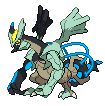
It’s an unfortunate indictment of the negative qualities of the Ice type that a box-art mascot legendary with absurdly high stats was allowed to compete in OU over Ubers by the competitive community, but Black Kyurem is still a monster when viewed through a standard-play lens.
Black Kyurem’s mixed capabilities are almost unparalleled. Any Trainer’s eye is immediately drawn to a truly ginormous 170 base Attack, but a second glance also reveals an excellent 120 Special Attack from which the Boundary Pokémon can launch strong Ice Beams. Black Kyurem also has enough bulk to earn the envy of some dedicated defensive Pokémon and possesses Roost for reliable recovery, letting it shrug off resisted attacks and chip damage sustained throughout the course of a match.
There has to be a reason this titan is not considered a format-breaking Pokémon, right? The answer lies in a number of cumulative flaws that curtail Black Kyurem’s potential. On the offense, Black Kyurem suffers from a lack of a good secondary physical STAB move – Outrage is incredibly powerful but the move’s downsides are easily exploited by skilled players; Dragon Claw is risk-free but nowhere near as lethal. This is a common issue for physically-focused Dragons but the best ones have other good STAB options, such as Earthquake for Garchomp or Return for Mega Salamence. Fusion Bolt is welcome for denting bulky Water types and Skarmory, but without STAB it does little to shake the other Steel (and later Fairy) types that litter the metagame.
Black Kyurem’s Speed is also merely good by OU standards, and falls fatally short of other vicious attackers. Dragon typing is broadly decent defensively but less desirable in a tier stuffed with other, faster Dragons, especially ones that seek to blast through resistance with Draco Meteor – to make no mention of the weaknesses Ice already brings to the table! Full vulnerability to the most relevant forms of status and weakness to Stealth Rock also compounds Black Kyurem’s problems on the defense. All this results in an imposing but ultimately balanced force in the pre-Sword and Shield OU format.
Feeling chilled, Trainers? Let us know if this icy blast from the past has led you to change your ways. Leave your thoughts in the comments below or join us on Discord!

